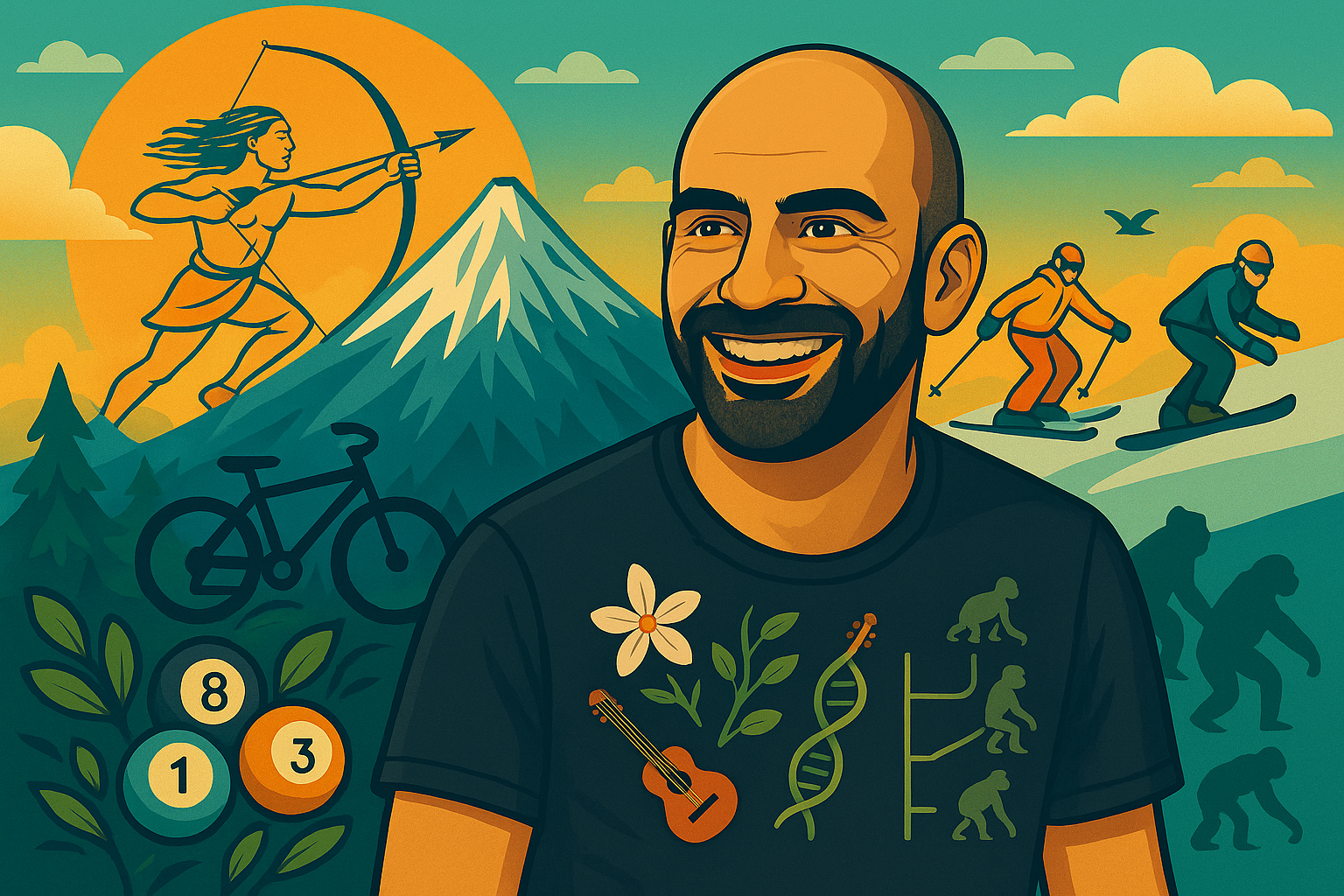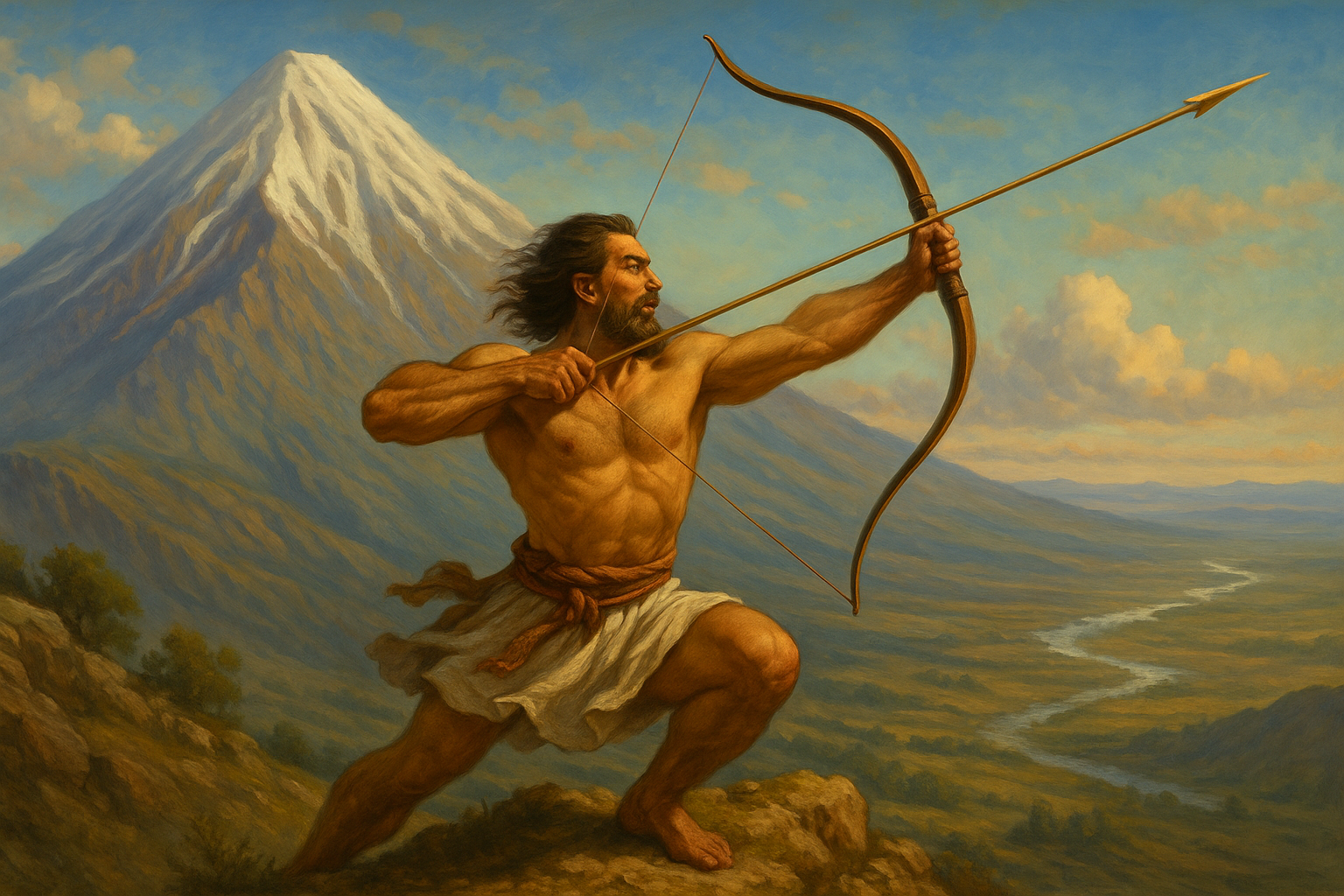A researcher uncovering the evolutionary and ecological processes that shape biodiversity, a creative thinker, and a curious mind committed to discovery.

"I love fools' experiments. I am always making them."
— Charles Darwin
Hi, I’m Mohammad Javad (Arash — Why? read my life) — an evolutionary biologist from southern Iran, drawn to truth, beauty, and the restless questions of life.
I’m currently a Ph.D. candidate at Charles University in Prague, where I explore how sexual selection shapes plant speciation and ultimately contributes to the richness of biodiversity.
My work draws on comparative analyses of floral traits and macroevolutionary patterns to better understand how ecology, whole genome duplication, and reproductive strategies influence the evolutionary paths of plant lineages.
At the heart of my research is a fascination with how variation in floral traits reflects shifts in male and female investment, and how these shifts evolve alongside changes in mating systems, pollination dynamics, and reproductive barriers, leaving deep imprints on patterns of diversification across evolutionary timescales.
Beyond science, I move with the seasons — climbing mountains, biking trails, skiing slopes, and writing poetry that traces the intersections of love, nature, and pain.
Download CV (PDF)
Julian Alps, Triglav, 07:54 28th July 2022
My doctoral research investigates how evolutionary forces such as sexual selection, ecological adaptation, and reproductive strategies shape macroevolutionary patterns in plants. A major part of this work involved synthesizing the mechanisms by which sexual selection operates in plants and evaluating its potential role in plant speciation.
In a comprehensive review published in Biological Reviews (2023), I provided an integrated framework connecting sexual selection, reproductive isolation, and plant diversification. While sexual selection has long been recognized as a driver of speciation in animals, its role in plants had remained underexplored. My review dissected how plants experience premating sexual selection (e.g., competition for pollinators via floral traits) and postmating sexual selection (e.g., pollen competition within the style and cryptic female choice)(see Figure 1-3).
I discussed how traits such as flower size, pollen tube growth rate, and style length can mediate these processes. Importantly, the review emphasized that while sexual selection can indeed contribute to reproductive barriers — for example, through pollinator shifts or pollen-pistil incompatibilities — it must often interact with ecological factors to ultimately drive speciation. I also proposed a conceptual framework linking microevolutionary mechanisms to macroevolutionary diversification patterns, and identified key outstanding questions and empirical gaps in the field. This work highlights plants as a powerful but underutilized system to broaden our understanding of speciation by sexual selection (see Figure 4).
To move beyond theory and test these ideas at scale, I subsequently developed a phylogeny comprising 1,000 species of Brassicaceae, now publicly available at OSF Repository. This large-scale phylogenetic framework integrates nuclear (ITS1, 5.8S gene, ITS2) and plastid (trnL-trnF) DNA sequences, and is time-calibrated using both fossils and secondary calibration points (see Figure 5). A forthcoming manuscript, soon to be submitted to Nature Ecology & Evolution, builds on this phylogeny to empirically test whether sexual selection can act as a driver of speciation in plants.
Additionally, I contributed to a published study in Oikos (2024) that examines how floral changes in neopolyploids affect pollinator behavior and gene flow between cytotypes. Using synthetic tetraploids of Arabidopsis arenosa, we tested whether polyploidization-induced floral enlargement would increase pollinator preference and promote assortative mating. Surprisingly, while tetraploids had larger flowers and set more fruit, pollinator behavior did not reinforce reproductive isolation. Instead, insects frequently switched between diploids and tetraploids, promoting interploidy pollen transfer. These findings challenge the assumption that polyploidy immediately fosters reproductive barriers and point to a more complex role for floral evolution and pollinator behavior in the early establishment of neopolyploids.
In parallel, I have explored how ecological and evolutionary forces shape reproductive investment across Brassicaceae. In a study published in Annals of Botany (2025), we analysed pollen and ovule production across 158 species, investigating how these key reproductive traits evolve. Our results revealed that ovule production is highly conserved and constrained by phylogeny, while pollen production is more evolutionarily labile, likely influenced by repeated shifts in mating systems. Selfing species consistently produced fewer pollen grains, supporting the idea of reduced male investment under increased mating efficiency. By contrast, ovule number was not similarly reduced, underscoring how male and female functions are shaped by distinct selective pressures. Although environmental factors had limited effects overall, we detected some associations, highlighting the complex interplay between ecology and reproductive trait evolution.
To check the summary of my Master's work, click here.
Hi, I’m Mohammad Javad (Arash).
The name Mohammad was given to me by my family, in honor of my grandfather — a gesture of remembrance and tradition. My mother chose the name Javad, which is woven into my identity to symbolize a fresh hope: a relationship built on equality, love, and shared beginnings, even from scratch. But the name closest to my heart, the name that speaks to my spirit, is the one held in parentheses — Arash.
Arash comes from one of the most beloved legends of Iranian mythology. In ancient times, after a long and bitter war between Iran and Turan, it was decided that a single arrow would define the new border between the two lands. An old man named Arash, known as Arash-e Kamangir (Arash the Archer), volunteered for the task. On the morning of Tirgan (corresponding to July in the Gregorian calendar), he climbed to the summit of Damavand — Iran’s highest peak — and with all his strength, with all his life force poured into one act, he drew his bow and released the arrow. The arrow flew for an unimaginable distance, finally falling near the Oxus River, marking Iran's rightful boundary. In giving everything he had to this moment, Arash vanished; his body was never found.
This story has always stayed with me — a story of sacrifice, hope, and the belief that one act, one moment, one life, can carry a meaning far greater than itself.

The modern Arash — the new baby (me) — was born in Borazjan, a sun-soaked town in southern Iran where the desert brushes against ancient rivers. In this land of lush palm groves, cattle farming, and the deep pulse of Afro-Iranian music and dance, I grew under a sky that demanded resilience, in a culture where love and pain live side by side, and where beauty is woven into the fabric of struggle. Growing up in this landscape of fire and river, I learned early that life is a constant negotiation between belonging and questioning.
From the beginning, I moved against the tides — stepping beyond the boundaries drawn by religious tradition, social expectation, and the quiet rigidity of my surroundings. I chose science, adventure, art, and questioning over certainty and obedience. Like the Arash of old, I set my arrow — my life — toward distant horizons, seeking not conquest, but understanding: for truth, for beauty, for the meaning carried by pain, and for a life lived in fierce defiance of narrowness.
Movement became my second nature. I have climbed over 24 peaks across Iran’s Alborz and Zagros ranges — including Alam-Kuh (4,848 m), Dena (4,407 m), and Kaman-Kuh (4,225 m) — and ventured into the Julian Alps, where I stood atop Triglav (2,864 m) in Slovenia. Through burning summers and frozen winters, I move with the seasons — mountain biking under a blazing sun, skiing and snowboarding through silent snows — always chasing the wild calm of high places, the quiet where the world falls away and something truer remains.
In moments of stillness, I find another kind of journey: walking along the skirts of the city, listening to birdsong and the whisper of tree leaves, watching airplanes carve slow arcs across the sky, and talking softly to myself — piecing together scattered thoughts into stories no one else will ever hear. Or I find refuge in billiards, in the strings of my guitar, and in poetry, weaving together the raw edges of love, nature, and the enduring weight of pain into something that, perhaps for a moment, touches the eternal.
And so, the arrow still flies — maybe not across lands, but across the real borders we redraw within ourselves.
If you have a question or just want to chat, feel free to send me an email — we can set up a time!